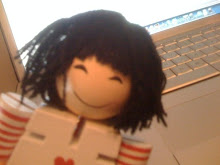I did something today that I've been meaning to do for a while, yet never got around to.
Today, I submitted my application and tissue samples to Be the Match.
You may know that I started donating whole blood about ten years ago, and have been a regular platelet donor for several years now, too. The next logical step was to be on the registry for a bone marrow or stem cells. My dear friend, Terri, who recently passed, received a bone marrow transplant from a healthy stranger about two years ago. The transplant was successful, for well over a year until her Leukemia came back. One thing is certain, the transplant certainly extended her life, which allowed her precious more time with her young children and family.
Terri had the opportunity to meet her (previously anonymous) donor last summer. Here is Terri's account of her experience from her blog.
As I mentioned, I had been meaning to look into becoming a bone marrow or stem cell donor (or, at least be on the database) for a while. With Terri's passing, I made the phone call and got more information. I know there is no greater way to honor her memory than to sign up to be on the donor database.
Here's some of the things I learned:
(pulling this information from the Be the Match website).
For blood cancer patients, there is a cure. And the amazing thing is, it could be you. On average, 1 in every 500 Be The Match Registry® members in the United States will go on to donate bone marrow or peripheral blood stem cells (PBSC) to a patient.
Donation statistics
1 in 40 registry members will be called for additional testing. Additional testing can be used to narrow the list of potential donors and determine the best possible match for a patient.
1 in 300 will be selected as the best possible donor for a patient. These potential donors will have an information session with their donor center representative to learn more about the donation process. Due to changes in the patient's condition, not all donors who are selected as the best match will donate.
1 in 500 members will actually donate.
Age:
Registry members are listed on Be The Match Registry until their 61st birthday. However, doctors request donors ages 18 to 44 over 90% of the time. Research shows that younger donors provide the greatest chance for transplant success.
I was quite surprised to find out about the age restrictions. I guess it makes sense that younger donors provide a greater chance of transplant success, but it bummed me out a little knowing that so much of the population could be turned down. Lucky for me, I'm 44 years old for just another 3 months, so I'm able to get my application in while I'm still young! ;)
I realize, especially given my age, that my chances of actually being a match to someone needing bone marrow or stem cells is very slim. However, Terri's stem cell donor was in her mid-40s, so I know it's a possibility. Who knows, I may be the perfect match for someone out there, and could help save their life.
The application process was very simple. I just filled out the form, with personal information and medical history, contact info, etc.,
Other than that, you submit four swabs that you rub against the inside of your cheek to collect your tissue sample.
Easy-peasy. Anyone can do this.


The most interesting thing that I found out was the process in which donations can now be made. I was only familiar with the surgical procedure, which, while it can be painful, it is also out-patient, and hey - you could be saving a life! Here's the information on the surgical way of donating bone marrow.
However, there's a newer procedure which I was unaware of. It's actually quite similar to donating platelets (a needle pulling your whole blood out of one arm, then the cells get sorted out, and the remaining blood returns to your body via a needle in your other arm. The process can be done in about 5 hours. (there is some prep leading up to it - you get a shot to increase the number of blood-forming cells in your body - you do this for five days before the procedure.) Here is the information on Donating peripheral blood stem cells.

The information I received on how to donate
I urge you to consider applying to be on the donor registry for Be the Match. The application process is simple and easy. The chances of actually being called upon to donate your stem cells or bone marrow is fairly low, but if you are chosen, you could literally save a life.


No comments:
Post a Comment